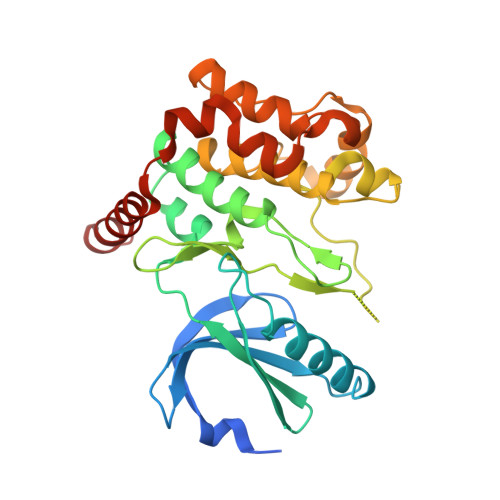Structural comparison of human mammalian ste20-like kinases
Record, C.J., Chaikuad, A., Rellos, P., Das, S., Pike, A.C., Fedorov, O., Marsden, B.D., Knapp, S., Lee, W.H.(2010) PLoS One 5: e11905-e11905
- PubMed: 20730082
- DOI: https://doi.org/10.1371/journal.pone.0011905
- Primary Citation of Related Structures:
3GGF - PubMed Abstract:
The serine/threonine mammalian Ste-20 like kinases (MSTs) are key regulators of apoptosis, cellular proliferation as well as polarization. Deregulation of MSTs has been associated with disease progression in prostate and colorectal cancer. The four human MSTs are regulated differently by C-terminal regions flanking the catalytic domains. We have determined the crystal structure of kinase domain of MST4 in complex with an ATP-mimetic inhibitor. This is the first structure of an inactive conformation of a member of the MST kinase family. Comparison with active structures of MST3 and MST1 revealed a dimeric association of MST4 suggesting an activation loop exchanged mechanism of MST4 auto-activation. Together with a homology model of MST2 we provide a comparative analysis of the kinase domains for all four members of the human MST family. The comparative analysis identified new structural features in the MST ATP binding pocket and has also defined the mechanism for autophosphorylation. Both structural features may be further explored for inhibitors design. This article can also be viewed as an enhanced version in which the text of the article is integrated with interactive 3D representations and animated transitions. Please note that a web plugin is required to access this enhanced functionality. Instructions for the installation and use of the web plugin are available in Text S1.
Organizational Affiliation:
Structural Genomics Consortium, University of Oxford, Oxford, United Kingdom.
















